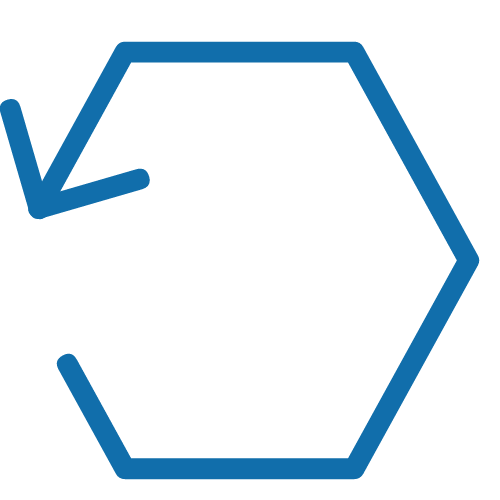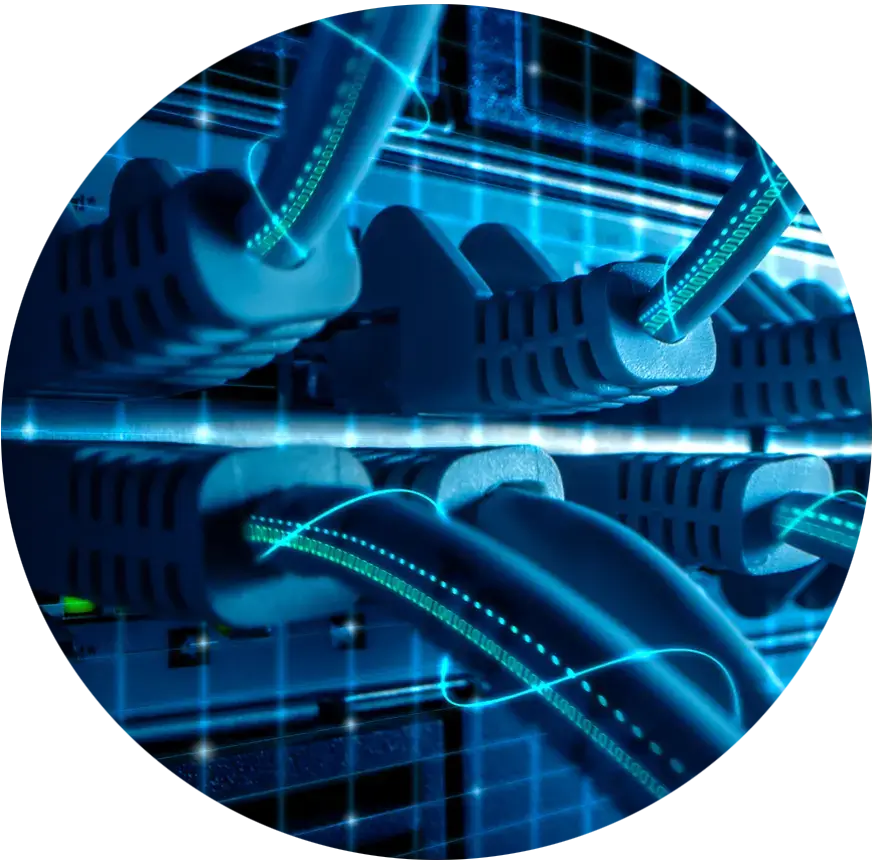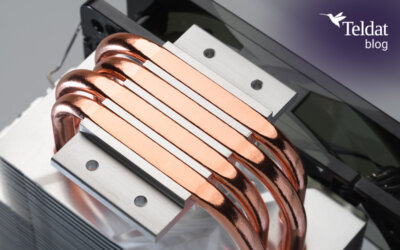Advanced enterprise-level Switching
Next generation gigabit switches for enterprise and organizations. Both managed access and high performance core campus scenarios
Enterprise-level switching possibilities
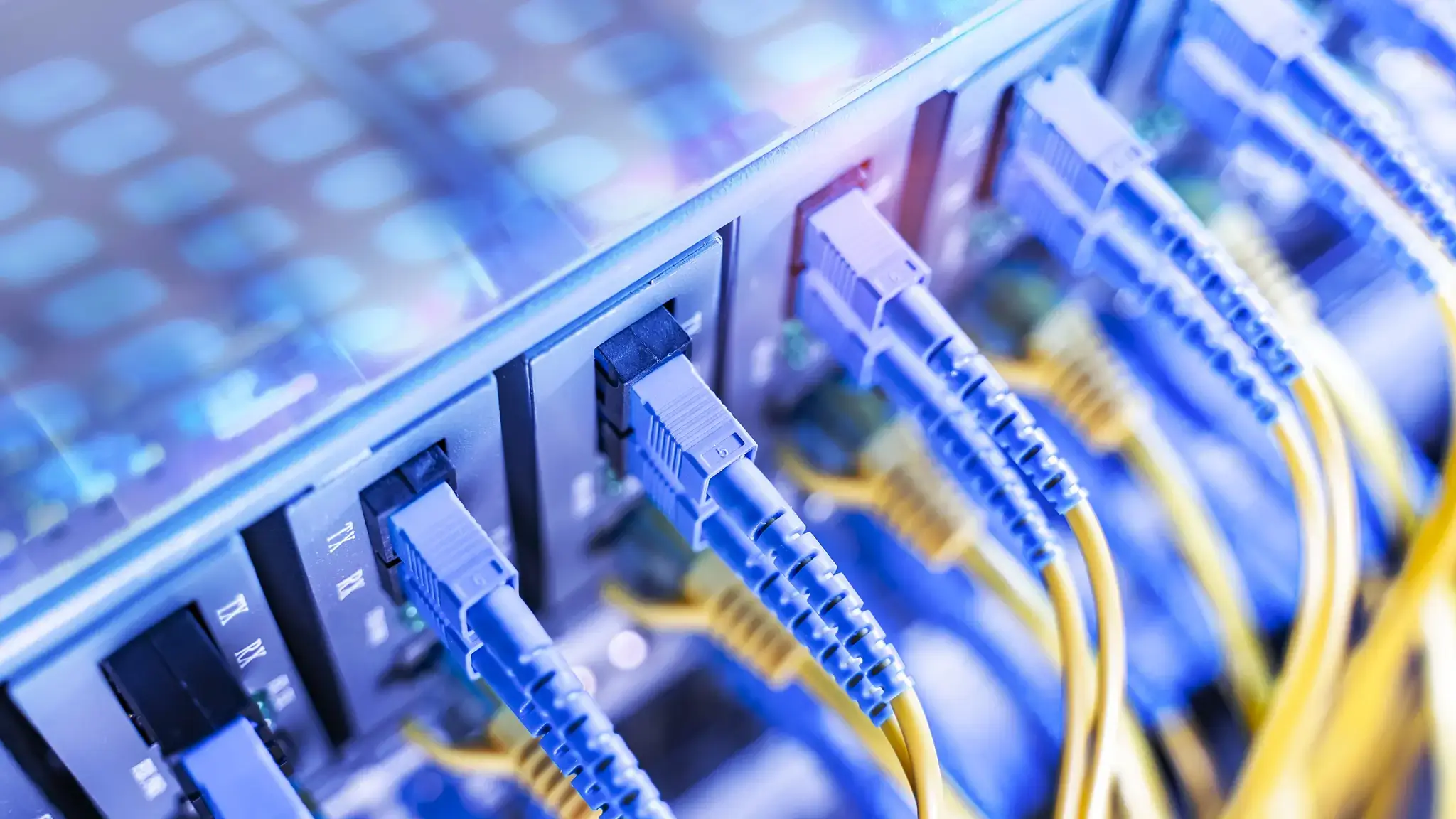
Teldat, has an advanced portfolio of enterprise-level switches, as within other areas of networking technology and corresponding technological solutions. Teldat’s Enterprise-level switching solutions offer important key issues:
- Next generation Layer 3 & Layer 2+ managed access switches
- PoE/PoE+ models, high-bandwidth, low-latency and flexibility
- Ready for critical IT services, including redundant power models
- High-performance multiservice switches for campuses and/or datacenters
- Virtual Extensible LAN (VXLAN) & Virtual Switch Unit (VSU)
Market Overview of switches

The enterprise-level switch market is robust and dynamic, driven by the increasing demand for high-speed data connectivity across various scenarios. Indeed, the enterprise-level switch market is expected to continue growing at a steady pace for the following years to come.
There are various market trends which are shaping the market.
Overall, digital transformation continues to grow. So much so that there is an increased need for high-speed data transmission, to be catered by more advanced switching equipment. Especially Level 3 switches, that are capable of carrying out higher level features and protocols, as well as, at faster speeds.
Moreover, companies are shifting more of their transactions towards cloud-based scenarios and not necessarily only towards the large cloud companies services. This is seeing a shift towards campus type and database type switches. These type of switches are definitely forecast to experience important growth over the following years accompanied by SDN management for more flexibility and open programable installations, to offer service to many branch sites or offices.
Another important scenario is that of 5G, IoT and Edge computing. Data processing closer to the edge, is generating a demand for switches, capable of high-speed connectivity and advanced security features.
Which leads to another key issue related to top enterprise-level switches for the near future. The ability to be able to handle cybersecurity solutions and the integration with artificial intelligence – AI and Machine Learning. These are definitely important challenges to be faced by the switching market, but are also bringing new opportunities for innovation and growth, which can expand into many other areas covered by switching technology.
What are the important points related to Switches

Level 3 & Level 2+ switches
Next Generation Gigabit Ethernet switches on Level 3 (L3) or Level 2+ (L2+). Allowing faster hardware processing, for high speed data flows and advanced features. Level 2+ (L2+) switches also permit a high cost performance when required.

Power over Ethernet on switches
Devices connected to a switch via PoE/PoE+, simplify the installations and enable flexibility to install devices wherever required. Eliminating the need of being near power outlets. It also permits for a centralized power management.

Campus & datacenter switches
High-performance next generation multiservice switches designed for campuses and/or datacenters scenarios with an advanced hardware architecture for elevated processing and high operation experience. Ready for critical IT scenarios.

Role of switches on SD-Branch
SD-Branch switches enhance network performance, reliability and resilience. Offering a centralized management and orchestration of any branch network. Also enabling advanced cybersecurity features and segmentation for protection.
Understanding enterprise-level Switches
Understanding the concept of switching is crucial and how it varies according to end user objectives, is vital.
In the realm of enterprise-level switching, distinctions can be made between Level 2 Switches, operating at the data link layer of the OSI model, and Level 3 Switches, functioning at the network layer, routing packets based on IP addresses.
Additionally, there are Level 2+ Switches, which can be considered as a streamlined version of Level 3 Switches, having the ability to carry out limited Level 3 switching functionalities.
An enterprise-level switch can seamlessly integrate into a corporate network or be implemented by a telecommunications carrier within any of their enterprise or organizational client networks.
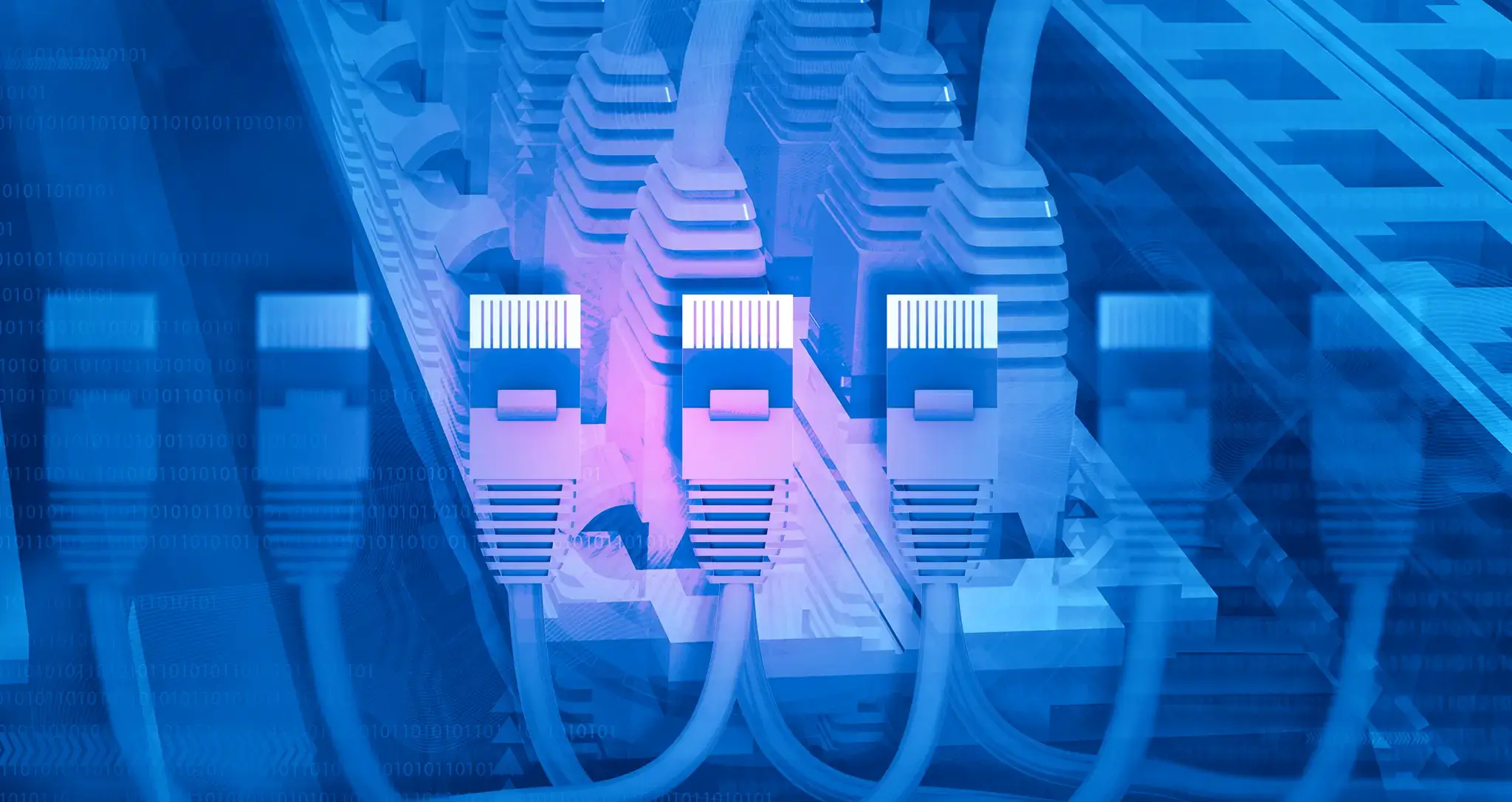
Types of enterprise-level switches
There are various types of enterprise switches tailored for specific functions:
Access Switches: Access switches are fundamental components in a network, facilitating the connection of end-user devices such as PCs, printers, phones, and other equipment to the network. They tend to operate at Layer 2+ handling the switching of data frames based on MAC addresses. By connecting multiple devices within a local area network (LAN), access switches play a crucial role in ensuring efficient communication and data transfer. They often include features like Power over Ethernet (PoE) to provide power to devices such as IP cameras and phones, as well as support VLANs to segment and manage network traffic effectively.
Distribution Switches: Distribution switches are strategically positioned between access switches and core switches, playing a critical role in aggregating and managing network traffic. They function at both Layer 2+ and Layer 3, providing not only switching capabilities but also limited routing functions. This intermediate layer ensures that data from multiple access switches is efficiently routed to the core layer, and it helps manage and optimize the flow of traffic within larger network segments. Distribution switches often include advanced features such as redundancy protocols, QoS, and security measures to maintain network performance and reliability.
Core Switches: Core switches form the backbone of an enterprise network, facilitating high-speed data transfer between different network segments. Operating at Layer 3, they provide robust routing capabilities, supporting complex routing protocols and handling large volumes of traffic with minimal latency.
Core switches are designed for maximum performance and reliability, ensuring that data can flow efficiently across the network’s various departments and branches. They are critical in maintaining the overall network architecture, enabling seamless communication between distribution layers and ensuring that enterprise-wide applications and services operate smoothly.
Why Enterprise-level switches are essential
Ensure swift packet forwarding: within networks. Both Level 3 and Level 2+ switches are engineered for rapid and efficient packet forwarding through hardware-based processing, addressing the imperative need for high-speed data traffic movement.
VLAN support: is a critical aspect for enterprise switches, enabling the segmentation of a network into logically isolated broadcast domains and thereby enhancing network efficiency.
Quality of Service (QoS): allowing the prioritization of specific types of traffic to ensure that critical applications receive the necessary bandwidth and resources.
Security: a vital concern in contemporary networks, especially within enterprise or organizational setups. Security features, including MAC address bypass (MAB) authentication, or Access Control Lists (ACLs) to manage which devices are allowed or denied access to a network are of vital importance.
Management and maintenance: as switch networks grow in complexity, users seek to streamline their ability to manage and maintain the networks. The ability to perform routine network diagnosis based on SNMP, RMON, Syslog, and more is crucial.
Switching Teldat Products & Solutions
The background
Switching is clearly an area in which all types of enterprises and organizations are moving from traditional Layer 2 switching to more advanced managed Layer 3 and even Layer 2+ devices. Depending on various factors, requirements from customers will vary.
Teldat has established a range of switches which cover a huge amount of scenarios that companies or organizations will need to fulfil. See a quick summary of what we have to offer below.

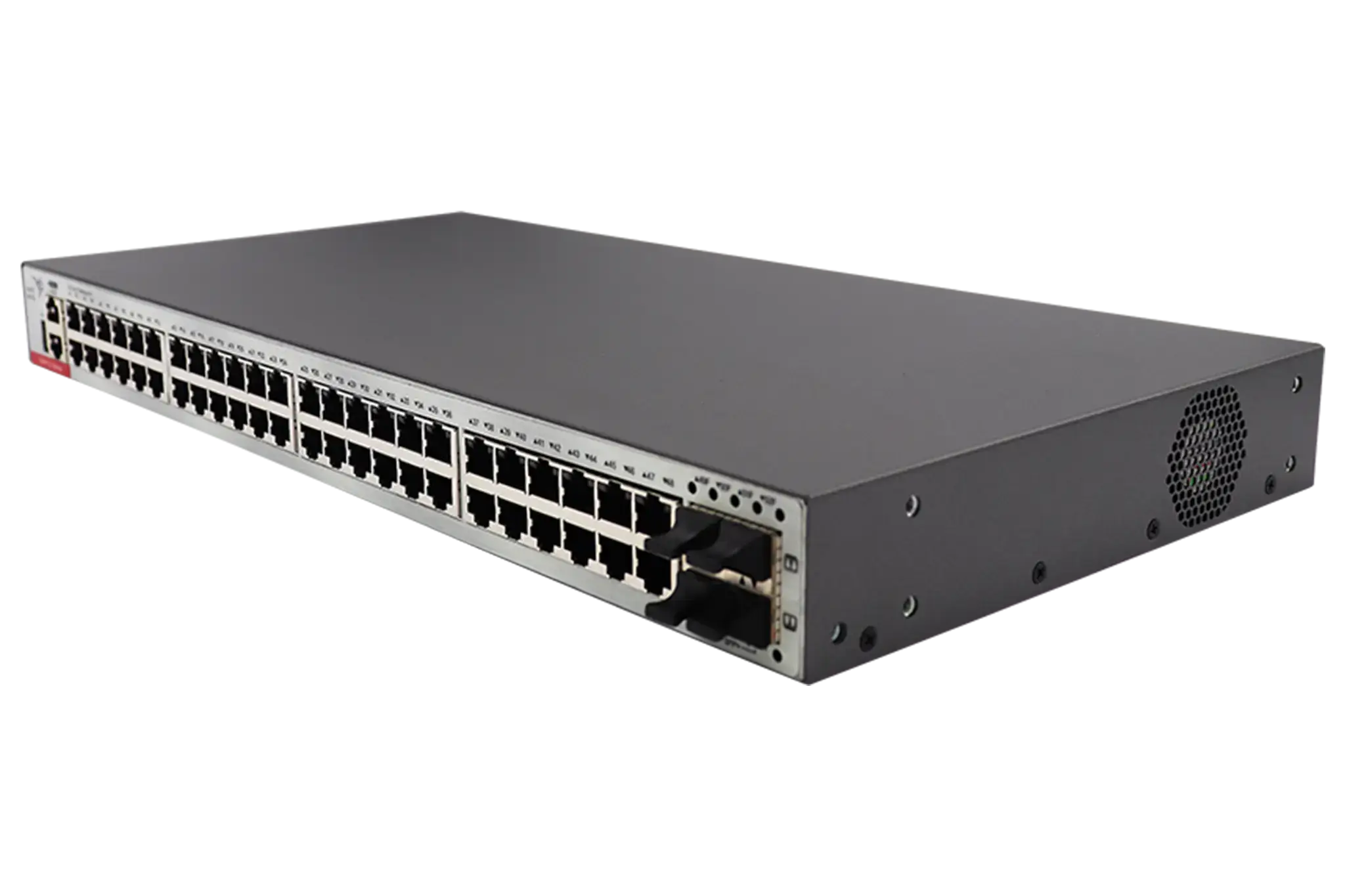
Layer 3 Managed Access Switch
An enterprise-class next generation Gigabit Ethernet switch. Teldat’s Windbit ESW1L3 switch is a Layer 3 switch with high-bandwidth, low-latency and adaptable to flexible scenarios. It also has various 10Gbps interfaces for uplinks to avoid bottlenecks between the switch and connected routers. They have low installation requirements and offer a high scalability and simplified topology for hot swap without affecting normal operations.
Teldat’s Windbit ESW1L3 switch is the perfect solution for many types of companies or organizations, that need to place their switching solution on to a new layer 3 scenario. Additionally, our switches are prepared for connectivity with IoT devices that require nearby access and ultrahigh bandwidth.
Layer 3 Managed Access Switch for critical scenarios
Teldat offers another enterprise-class next generation Gigabit Ethernet switch for critical scenarios, with two power modules. Teldat’s Windbit ESW2L3, has all the characteristics of the ESW1L3, plus the two power modules.
This is perfect for those locations which cannot risk the switches having outages, assuring a 24x7x365 service. Hence the redundant power module.
They tend to be used by the medical healthcare industry, smart classrooms, security industry, etc. Overall, any company or organization that needs to lower or eliminate all risks of outages, to assure an internal service or high level user experience.
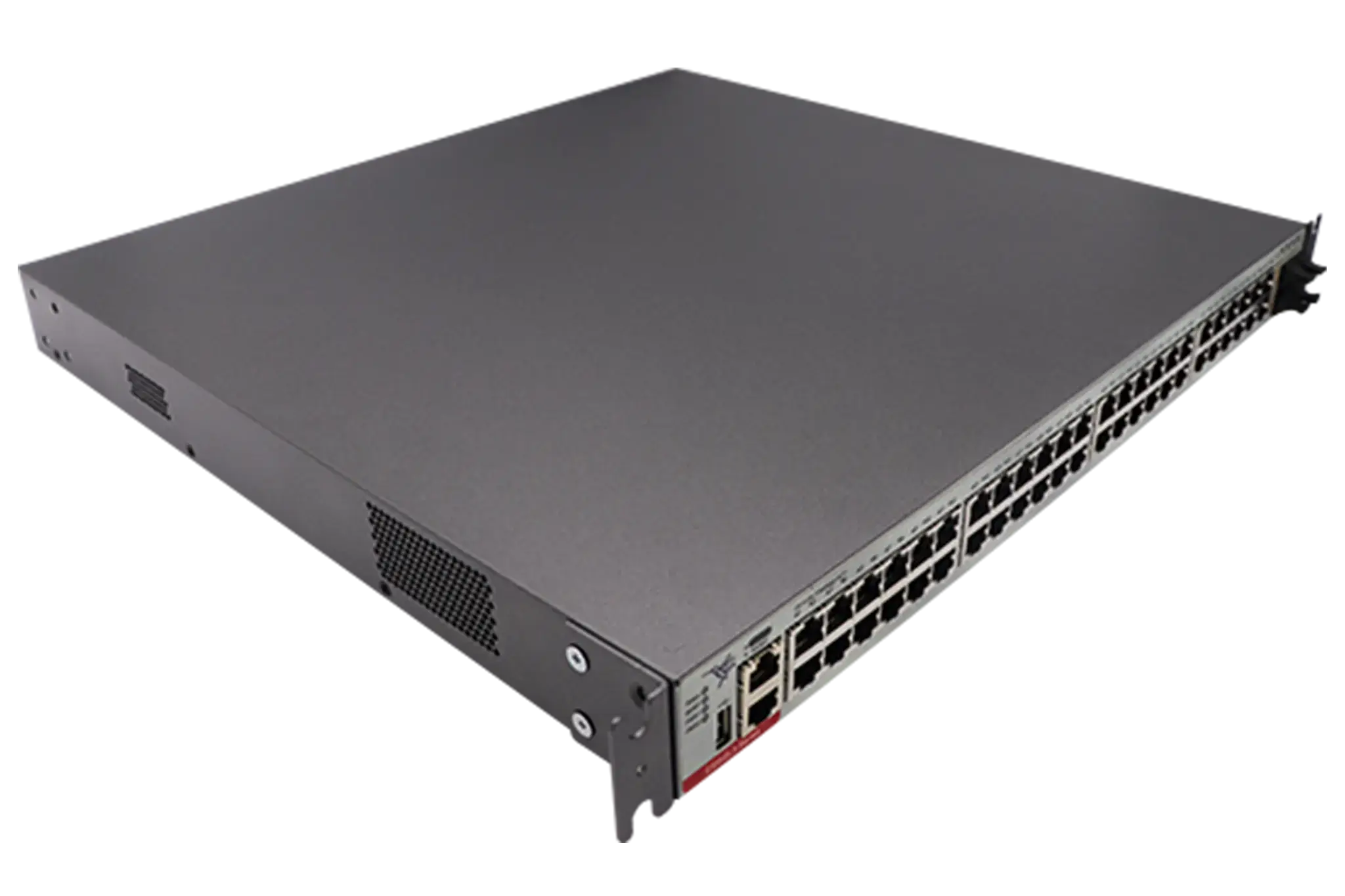
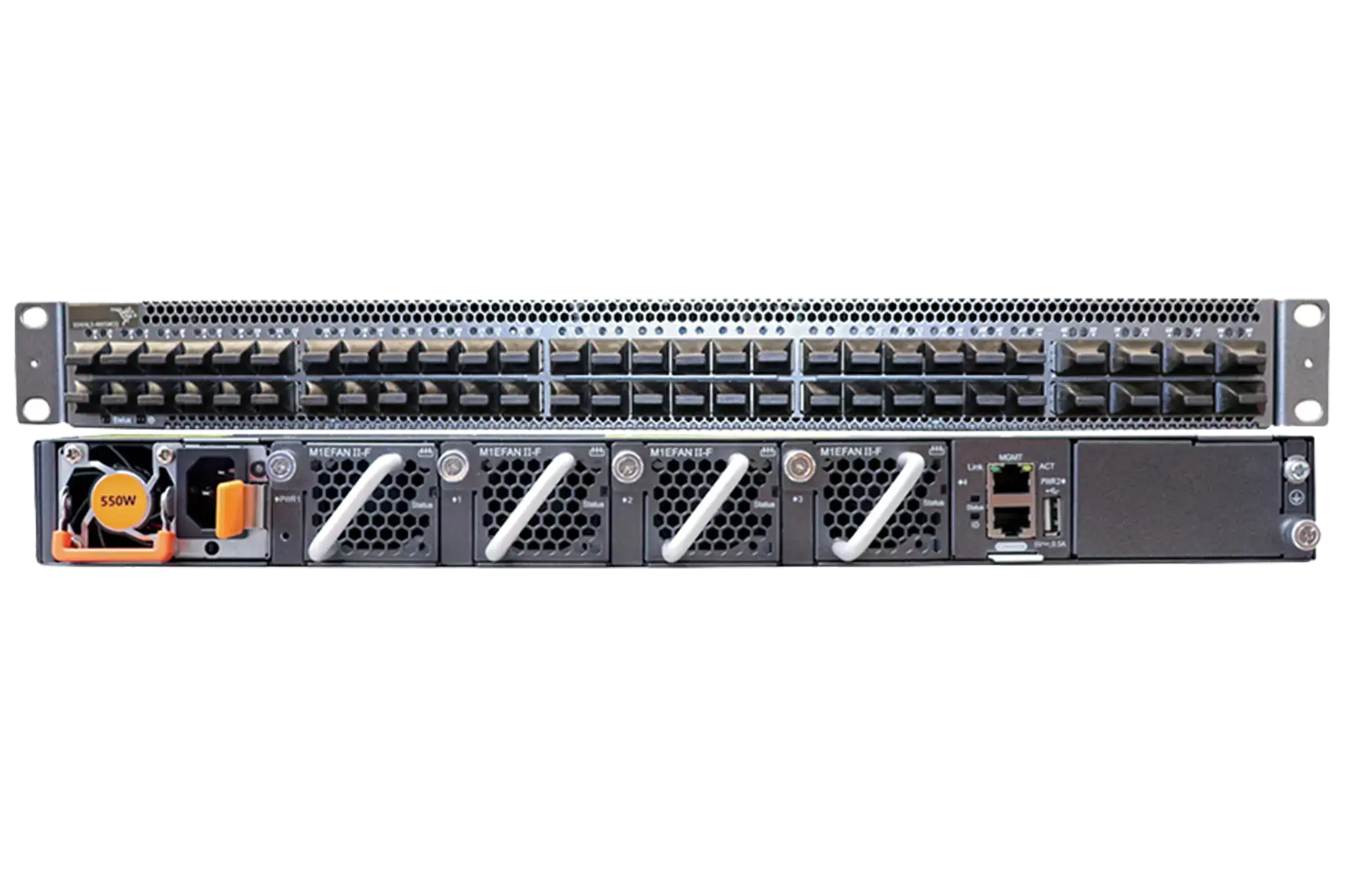
Next-Generation Core Switch
High performance core switch. Teldat’s Windbit ESW4L3 switch works on Layer 3. It is designed for diverse campus and datacenter scenarios with an advanced hardware architecture for elevated processing and high-speed interfaces for operation experience. Offering both 10G and 25G access ports, as well as 100Gbps interface uplink, avoiding bottlenecks. It works on Virtual Extensive LAN (VXLAN) and Virtual Switching Unit (VSU).
For larger networks this next generation switch permits aggregation. Teldat’s Windbit ESW4L3 switch is perfect for large government buildings, university campus and other enterprises or organizations with large sites, such as Manufacturing plants, energy companies, operators, etc.
Windbit ESW0L3 Switch Family
Companies with moderate network demands, such as small to mid-sized businesses or branch offices, would benefit from the Windbit ESW0L3 series. Its flexible port configurations and sufficient performance capabilities make it suitable for environments that require reliable connectivity without the advanced processing power.
Additionally, organizations with budget constraints or lower bandwidth needs can optimize costs by choosing the ESW0L3, as it provides essential Layer 3 functionalities without any additional license, and PoE/PoE+ capabilities. It’s ideal for less complex network infrastructures.
A perfect switch for many types of organizations or companies. To name a few, from educational institutions for classroom / administrative connectivity, to retail chains with multiple POS and security or hospitality companies to manage guest Wi-Fi and internal operations.
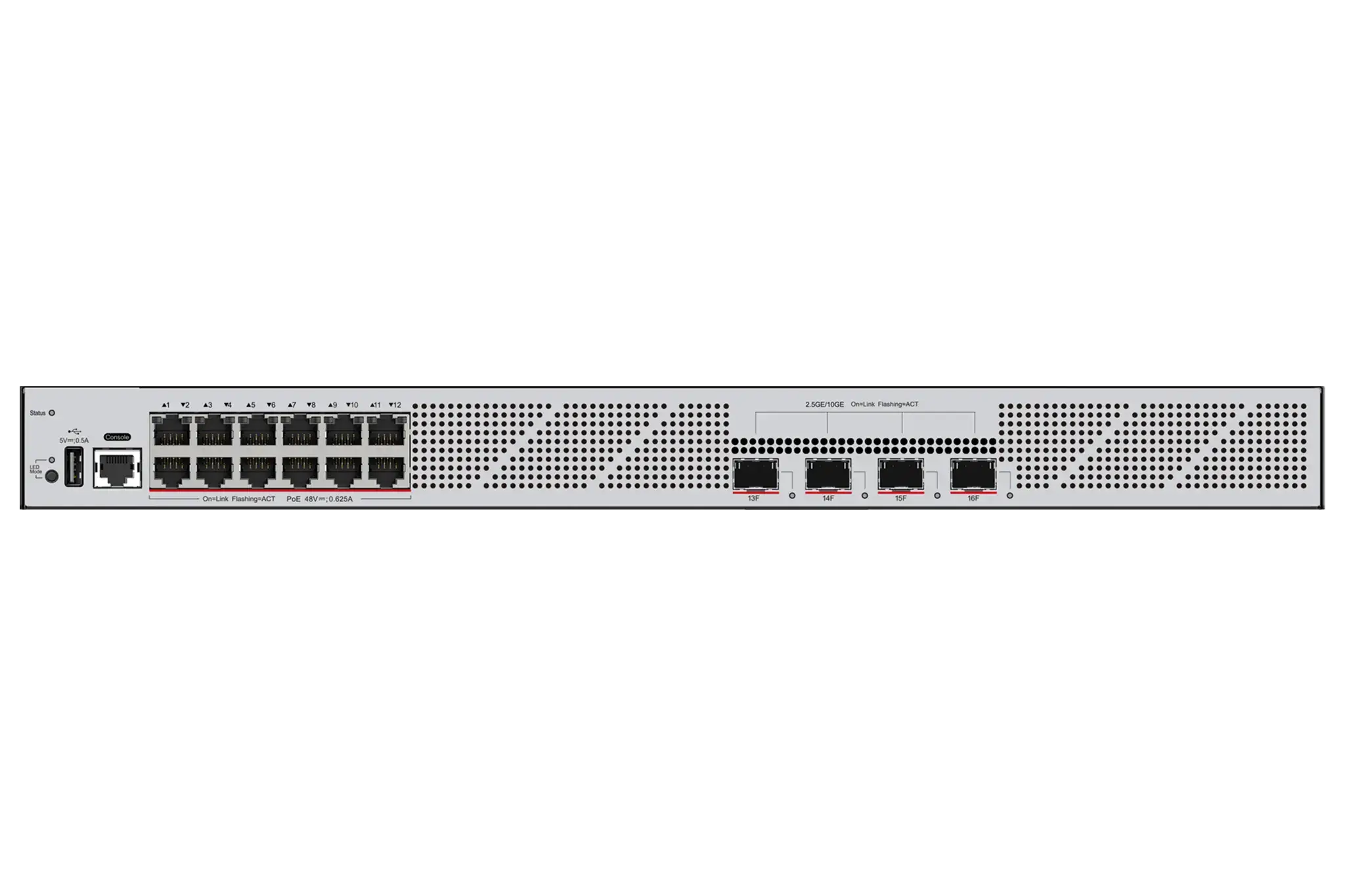
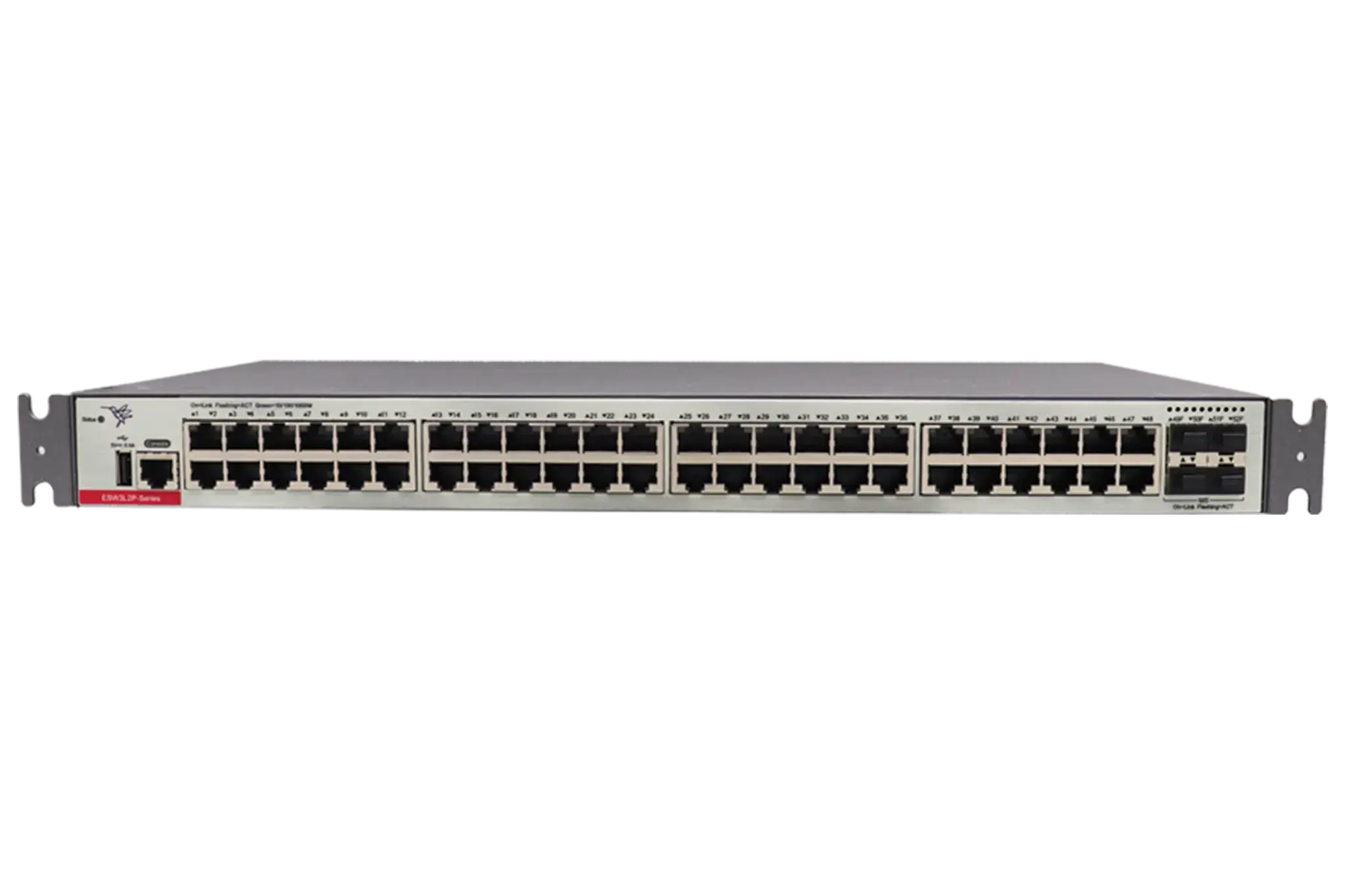
Simplified Gigabit Switch
Teldat also has the perfect solution for those who do not need all the high availability of the switches explained above, but do need an advanced solution compared to a traditional Layer 2 switch. Teldat’s Windbit ESW3L2P is a simplified Gigabit Switch based on Layer2+ technology. Capable of offering POE/POE+, optical and electrical interfaces. An enterprise-class high reliability for specific companies and organizations.
Its users are medium-sized companies from any market segement, such as retail, travel, hospitality, distributors, etc. or organizations such as local councils / governements, education, etc. The list is endless, both within the private or public sector.
Switching Use Cases
Electronic Office Network
Need to enhance network performance and manageability with higher level of on-site data traffic.
Challenge
Any electronic office network face important issues that must be dealt with. Firstly, there is the scalability issue. Managing increasing amounts of data traffic, as well as accommodating more devices. Both because most users have more than one device on the network and enterprises and organizations are seeing an increase of IoT devices being deployed on their sites, that need connectivity with switches (IP camaras, access controls, industrial sensors, environmental monitors, building automation systems and more.
Whether it’s employee devices or IoT devices, they will require reliability to ensure consistent network coverage, as well as protection from security threats and cyber attacks. Additionally electronic network office systems need the management complexity to be simplified as much as possible).
Solution

Teldat has a range of next generation Layer 3 gigabit switches which ensure that electronic office networks fulfil all their requirements. Teldat’s Windbit ESW1L3 and ESW2L3 switch. Enterprise-class switches, which offer among other issues, high reliability, high-bandwidth, PoE/PoE+ and for non-stop critical services, Teldat’s ESW2L3 switch have redundant power modules to avoid power outages. Also our switches are flexible to adapt to the increasing amount of IoT devices, being deployed in enterprise and organizations.
Moreover, Teldat has Windbit ESW3L2P switches with Layer 2+ technology, for all those medium size companies and organizations that need switches that accompany their needs.
Why Teldat?
Teldat has a full range of Layer 3 managed access switches and Layer 2+ gigabit switches that can supply companies or organizations with the type of switch which best fits their environment.
Datacenters
Enterprise & organizational datacenters are evolving into totally new sites
Challenge
There are many enterprises and organizations which have very large buildings and sites that need to have a managed and centralized network connectivity. These type of scenarios tend to have an exceptionally high level of data traffic with high volumes and hence require reduced latency and congestion prevention to ensure smooth performance.
Also network standards and protocols have to be used to ensure seamless communication and interoperability between different network segments.
Large site or campus networks will need to provide reliability and work efficiently throughout an entire building or campus scenario. That includes applying user mobility and access, across an entire site or campus. Making sure that authentication management and maintaining consistent access control are met.
In such large environments, security concerns are also paramount to avoid cyber attacks.
Solution

Teldat’s next-generation Windbit ESW4L3 core switch is the perfect high performance device for large companies and large organizations to establish a full core switch scenario with high data speeds and elevated processing capacity.
Teldat’s Windbit ESW4L3 campus switch integrates the many functions and features which are required. They provide Virtual Extensible LAN (VXLAN), offering scalability to ensure performance in large environments. Also, they support Virtual Switch Unit (VSU) which ensure redundancy with high availability and failover capabilities, as well as synchronization to maintain consistent configuration for seamless operation of large switch scenarios.
Why Teldat?
Teldat’s Windbit ESW4L3 has all the requirements that a core switch will need. Apart from the features already mentioned in the Solution, it has high speed access ports, 100Gbps interfaces for uplink and is prepared for non-stop critical IT services.
Read our latest Blog Posts
Understanding the technology behind heat pipes
Heat pipes transfer heat on electronic devices & industrial applications, using the heat transition principle, to transfer to heat sinks within a cooling system. Heat pipes have clear advantages over other heat dissipation methods. What are heat pipes? Heat pipes...
The importance of sequencing power domains in electronics
There is a clear trend in the electronics industry for integration, allowing for more compact and efficient designs. More and more, electronics manufacturers are making their chips smaller, including more components within their chips and extending the feature range....
Improving device reliability and redundancy
In a previous article we looked at how to mathematically calculate the reliability of electronic equipment. That is, the probability of it working correctly for a given period of time. This is best characterised by the Mean Time Between Failure (MTBF), or its...



